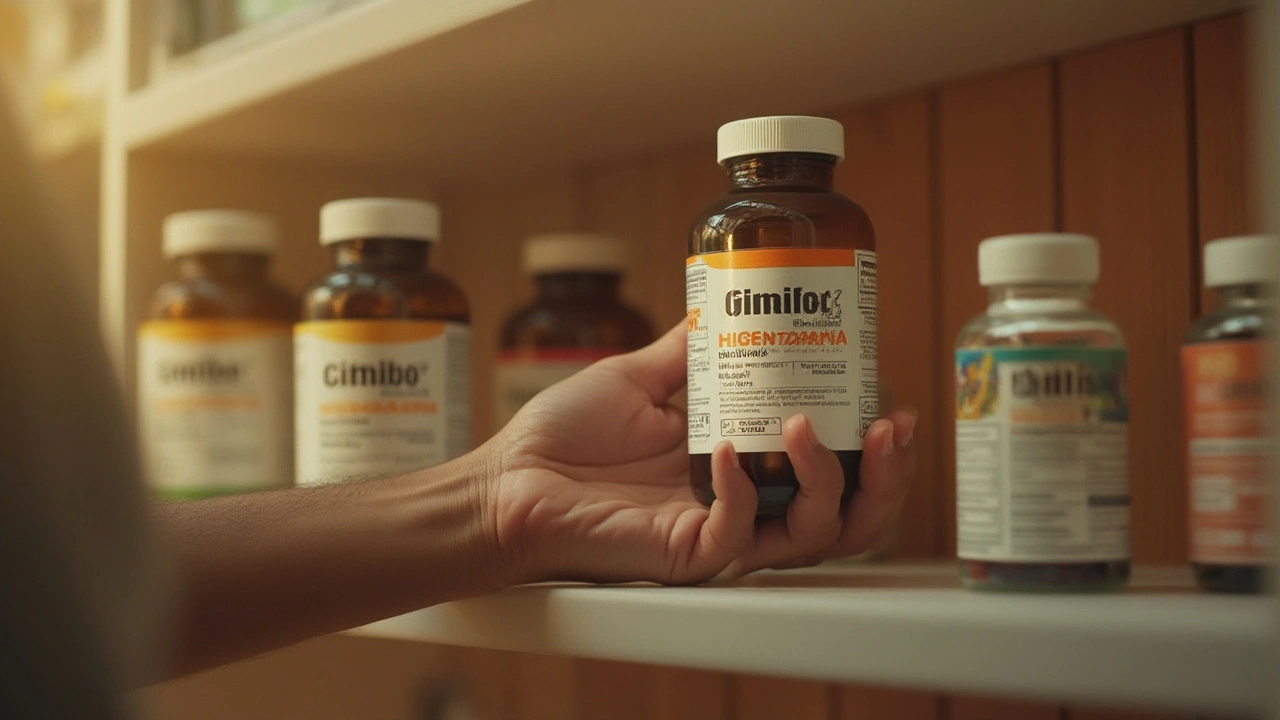Remember when caffeine was the all-star ingredient every athlete swore by? Now, there’s a new name making serious waves in gyms and supplement circles: higenamine. Tucked quietly into the label of your favorite pre-workout, this compound is catching heat for ramping up performance and torching fat when you need it most. If you’ve been guessing what pumps some of today’s best supplements, you’re about to get clued in.
What Exactly Is Higenamine and Why Should You Care?
Higenamine isn’t a flash-in-the-pan trend cooked up in a supplement lab. This alkaloid shows up naturally in plants like lotus, aconite, and even the sacred lotus flower that’s been celebrated for centuries. What makes it so fascinating is how it thwarts fatigue and helps your body shift into an energized, performance-ready zone — it’s like flipping a switch before you hit your first squat.
On a chemical level, higenamine acts as a beta-adrenergic agonist. Basically, it nudges certain receptors in your body (yep, the beta-2 ones you’ve probably heard are tied to fat burning) to help open airways and kick your metabolism up a gear. If you’ve ever heard of ephedrine (the old-school fat burner now mostly off the shelves), think of higenamine as its more modern, less notorious cousin.
This fresh rise in popularity is fueled by how higenamine works around the body’s usual roadblocks. Caffeine can give plenty of people the jitters; other pre-workout stimulants often come with a nasty crash. Higenamine flies under that radar — it’s cleaner, some lifters say, with a less abrupt letdown. And despite having centuries of herbal use behind it, it’s only recently landed under the gym spotlight.
Here's a quick look at where higenamine is most commonly found:
| Plant Source | Region | Traditional Use |
|---|---|---|
| Sacred Lotus | East and Southeast Asia | Energy, Relaxation |
| Aconite Root | China | Pain relief, Tonic |
| Nandina | China, Japan | Respiratory issues |
The take-home? Higenamine is rooted in traditional herbal medicine, but science is catching up — fast.
Performance Benefits: Can Higenamine Really Elevate Your Workout?
A lot of pre-workout blends talk a big game. But what does higenamine actually do for you once it’s in your system? That beta-2 receptor activation isn’t just science-speak — it’s the real pathway behind improved airway dilation. For anyone serious about cardio or even just surviving HIIT without heaving, this boost lets you draw in more air and push harder.
Consider a study from 2021: subjects who took higenamine showed increased physical capacity during endurance tests compared to those on a placebo. They didn’t just run longer — they also reported feeling less winded. It’s a win for everyone from runners to powerlifters who want less burn-out mid-set. It’s not magic, but it is noticeable.
Higenamine also sparks up dopamine release. That’s not just good for mood; it sharpens focus too. If you find yourself zoning out halfway through a tough session, this is the cognitive spark you’ve been missing. More mental focus means better form, more reps, and higher satisfaction post-workout (science backs that up, too).
Because higenamine doesn’t spike blood pressure as wildly as other stims, you get smoother, more sustained energy. The absence of a nasty crash also means you can cruise through your workout — and the rest of your day — without feeling like someone pulled your plug.
When do you actually notice the effects? Most lifters and athletes say about 30-45 minutes after downing a pre-workout with higenamine, energy, airflow, and focus are all turned up a notch. Stack it with caffeine or L-theanine if you want extra velocity; most supplement brands do exactly that for a reason.
So, performance-wise: it’s not just hype. The results are measurable, and for a lot of gym-goers, honestly addicting (in the good way).

Fat-Burning Potential: What Makes Higenamine Stand Out?
Fat loss is tricky business. Higenamine’s real trick is how it boosts your metabolism without the overstimulation and crash of classic fat burners. Think of it as your metabolism’s favorite playlist, keeping things moving briskly when you’re sweating for that cut.
Scientists have pinpointed its fat-burning effect down to lipolysis — the process where your body breaks down stored fat for fuel. Thanks to its beta-2 agonism, higenamine tells fat cells to release more fatty acids into the bloodstream. If you’re in a calorie deficit and active, this means more body fat gets burned for energy, not just stored for later.
But does it work in real life? Here’s what’s cool: a 2013 trial found when overweight folks took a blend including higenamine, they saw increased energy expenditure and fat oxidation within hours. That’s not months-on-end wishful thinking; it’s results you can actually feel in a single session.
One myth to bust: higenamine won’t melt fat if you aren’t moving. It’s a potent ingredient, but don’t expect miracles if you spend all day on the couch. Used smartly — say, alongside a sensible calorie deficit and a challenging workout program — it helps tip the odds further in your favor.
Some tips to get more out of higenamine for fat loss:
- Time your supplement 30 minutes before your workout for maximum fat-burn effect.
- Combine with caffeine for a synergistic nudge to your metabolism (if you aren’t caffeine sensitive).
- Keep your protein intake high – fat burning means sparing muscle, too.
- Hydrate! Some users say higenamine makes them sweat more.
If you’re skeptical about seeing actual change, knowing how higenamine works at a cellular level — not just as a psychological buzz — should put your mind at ease. Its effects are real, not just in the lab but in everyday gym life.
Is Higenamine Safe? Here’s What the Science Actually Says
No one wants to pop a supplement ingredient that’ll nuke their health for the sake of a better squat or faster sprint. So what’s the real story with higenamine safety?
The early worry came from piling higenamine in the same box as other stimulants with shady reputations. But clinical studies paint a nuanced picture. Doses of up to 75mg per day, for periods up to eight weeks, haven’t shown toxic effects in healthy adults. Blood pressure? Mostly unchanged. Heart rate? Only a mild bump, and most people didn’t even notice unless they already had cardiovascular issues.
There are things to keep in mind, of course. People with high blood pressure, arrhythmia, or other heart conditions should skip higenamine unless cleared by their doctor. Same with pregnant or breastfeeding women — there just isn’t enough data for a green light. And while the FDA hasn’t banned higenamine completely, some sports organizations (like WADA) do – so if you’re competing on a strict circuit, double-check before you dose.
Common side effects are usually minor: a little more thirst, maybe some restlessness, similar to how some folks react to a big cup of coffee. Rarely, someone might get dizziness or headaches. That’s why it pays to start at the low end, see how you respond, and scale up only as needed.
One unique perk? Higenamine appears less likely than old-school stimulants to disrupt sleep if taken early enough in the day. Users who tend to toss and turn after caffeine say it gives a more controlled lift — so your sleep, and your recovery, don’t need to take a hit.
Always check your supplement source. Quality can vary by brand, so scan labels, research company reputations, and don’t fall for the dirt-cheap stuff (you get what you pay for, right?). If you want a deep-dive breakdown on dosing, purity, or other perks, this resource on Higenamine is a must-read before you buy anything new.

Practical Tips: Who Should Use Higenamine and How to Stack It
Is higenamine the miracle for everyone? Not quite — but it fills a sweet spot for certain groups. Who gets the most out of it?
- Endurance athletes: The improved airflow and stamina make it great for runners, cyclists, or HIIT addicts.
- Lifters in a fat-loss phase: You keep energy high even with fewer calories, and may hold onto muscle better.
- Anyone burned out by harsher pre-workouts: If DMHA or other harsh stims wreck your sleep or send your pulse skyrocketing, higenamine could feel just right.
Here’s how to safely add it to your routine:
- Start with a low dose (usually 20-25mg) 30 minutes pre-workout.
- If things feel good, you can work up, but never exceed 75mg per day unless researched otherwise.
- Stack smart: caffeine, yohimbine, and l-theanine are common partners, but don’t go wild adding multiple stims at once.
- If using for fat loss, make your hard sessions count — lazy use won’t net much change.
- Cycle: run higenamine for six to eight weeks and then take a week or two off so your body doesn’t adapt.
Don’t forget to track how you feel and watch for interactions — especially if you’re taking prescription medicines or have health issues.
With so many pre-workout options clogging the supplement market, it’s easy to get lost in the hype. The big difference here is that higenamine actually delivers: better performance, smooth energy, and a subtle edge in burning fat, all while being friendlier on your system than most heavy-hitters. Skip the caffeine jitters, avoid the supplement crash, and see what smarter supplementation can really do.







Comments
HARI PRASATH PRASATH
Alright, let me set the record straight-higenamine isn’t some gimmick you read about on fringe blogs. It’s a bona‑fide beta‑2 agonist that actually shifts your physiology into a higher‑output mode, and anyone who dismisses that is ignoring hard data. You’ll notice a smoother airflow and a steadier energy curve, not the jittery spike you get from cheap caffeine stacks. If you’re chasing preformace, you might as well respect the chemistry rather than pretend it’s all hype. Its traditional herb roots give it a legacy, but the modern labs have quantified the dose‑response, so stop treating it like mystical snake oil.
Andrew Miller
I feel drained just reading about another stimulant.
Brent Herr
It’s ethically unacceptable to market higenamine as a harmless shortcut when the long‑term cardiovascular impact is still murky. Users are being lured by slick packaging while regulators scramble to keep up, and that’s a betrayal of public trust. Anyone who slaps this on a pre‑workout without full disclosure is complicit in exploiting vulnerable athletes. We need stricter oversight, not more hype, because glorifying chemical boosts fuels a dangerous chase for performance at any cost. The moral line is clear: transparency over profit.
Julius Adebowale
Data from 2021 shows a modest increase in VO2 max without significant rise in systolic pressure; sample size was limited but statistically relevant; the effect size suggests a real physiological benefit albeit modest
KISHORE KANKIPATI
Let’s take a step back and appreciate the full tapestry that higenamine weaves into our training routines. It isn’t just a chemical jolt; it’s a bridge between ancient plant wisdom and modern performance science, a reminder that nature often holds the blueprints for our most ambitious goals. When you time a modest dose 30 minutes before a hard session, you’re essentially giving your mitochondria a gentle nudge to burn fuel more efficiently, which can translate into that extra rep or kilometer you’ve been chasing. The beta‑2 agonism sparks lipolysis, but it also supports smoother airway dilation, meaning you won’t feel like you’re gasping for air at the top of a sprint. Imagine the feeling of a steady, rhythmic breath, like a tide washing over you, while your muscles stay sharp and focused. That mental clarity isn’t just hype; dopamine release from the compound can sharpen your concentration, helping you maintain impeccable form when fatigue threatens to creep in. And because the surge is smoother than a caffeine crash, your post‑workout recovery isn’t sabotaged by a late‑night adrenaline surge. Think of it as a graceful dancer rather than a bull charging the arena-powerful, yet controlled. For those on a calorie deficit, the extra fat oxidation can be the gentle wind that pushes the scales in the right direction without sacrificing muscle. It’s essential, however, to respect individual variability; start low, listen to your body, and keep a journal of how you feel across weeks. Community wisdom thrives when we share those nuanced experiences-what works for one might need tweaking for another. In the grand scheme, higenamine offers a middle path: a modest, evidence‑backed lift without the extreme peaks and valleys that plague many other stimulants. By approaching it with curiosity, respect, and a dash of colorful optimism, you can harness its benefits while staying grounded in safety. Stay open, stay informed, and let the journey be as rewarding as the destination.